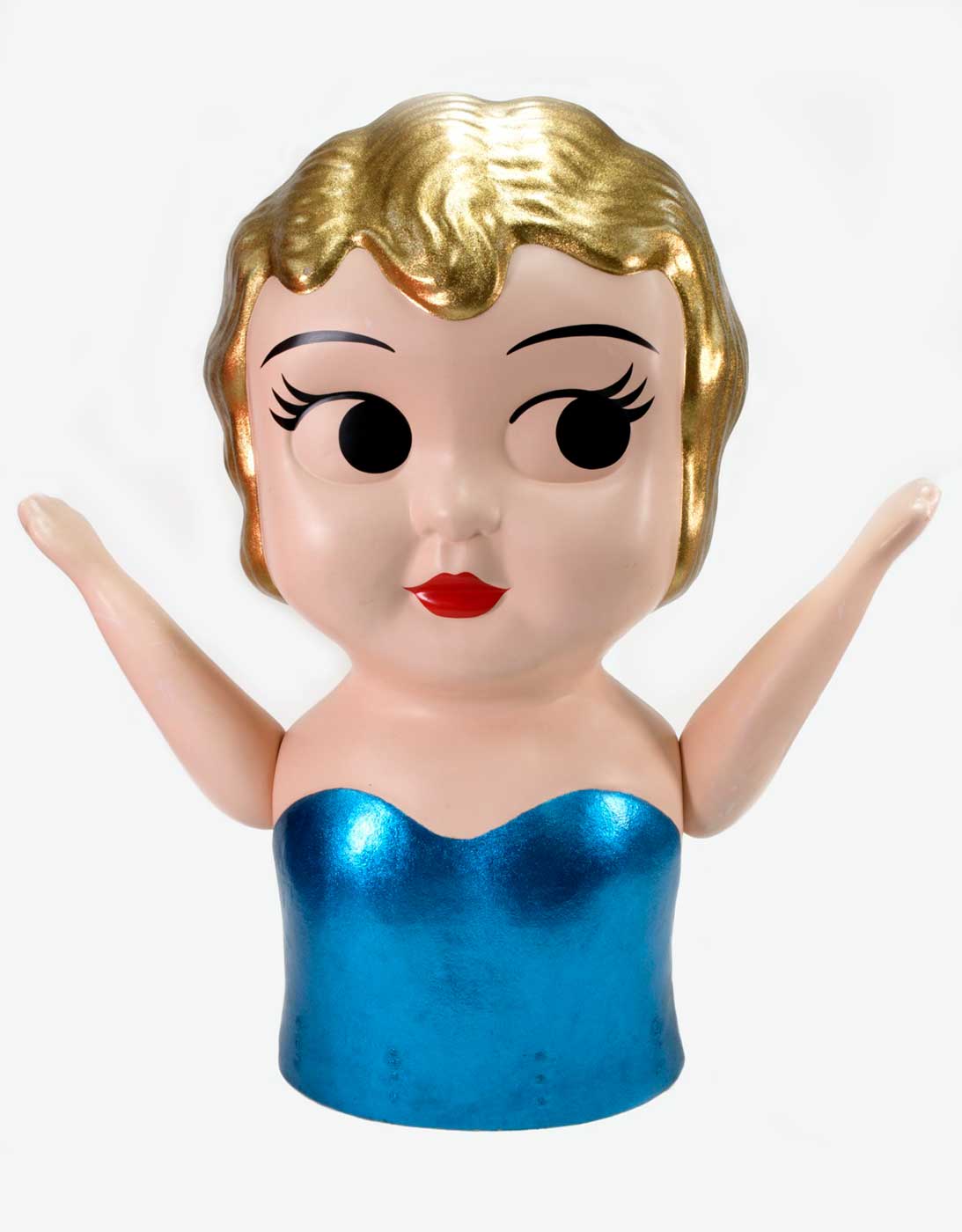
This is Betty, one of the 12 giant kewpie dolls that twirled their way around Stadium Australia during the closing ceremony of the Sydney 2000 Olympic Games.
As the ceremony's artistic director David Atkins explained, the Australian backyard-themed shindig was to be 'a party to end all parties'. When Betty entered the arena, the party was reaching its climax.
John Paul Young sang 'Love is in the air' as 960 couples danced the samba in unison, accompanied by 200 giant jiving feet on sticks. The world's athletes joined up into a huge conga line.
Betty and her six-metre-high kewpie sisters, each in their own coloured crinoline, were sent spinning giddily amongst the performers on the track. 'The dolls scattered us like chaff in the wind,' wrote one ballroom dancer.
Designed by Brian Thompson, the dolls were based on the 'Marcella kewpie', a flapper-girl Japanese version of Rose O'Neill's cowlicked, roly-poly original.
Scaled up, the huge kewpies presented a logistic challenge for the prop creation team. Too tall to be wheeled through the stadium's subterranean passages, their hinged bodies had to be raised and lowered on the field. Large, voluminous skirts were prevented from catching in the kewpies' trolley wheels by reinforced aluminium tubes.
The original Kewpie was sculpted by James Colmer, the director of Bimmini Special FX and Design Studios on Queensland’s Gold Coast and then 12 finished dolls were pulled out of a mould in fibreglass. With the assistance of Lara Denman they were then carefully painted and individually glittered in different metallic colours.
Each doll was dressed in tulle skirts which were made by a local dressmaker and her team using over 1km of fabric. Once the dolls were completed they were transported by semi-trailer to the Ceremonies Workshop at Eveleigh in New South Wales, where they were fitted onto a metal base with wheels which enabled the dolls to be moved around as well as raised and lowered.
The kewpies' colossal size and looming presence evoked a bittersweet mix of frivolity, transience, and finality. The designers of the segment drew their inspiration from the sideshow, Strictly Ballroom and Summer of the Seventeenth Doll.
The 'best games ever' were coming to an end. As Matthew Engel wrote in the Guardian: 'Like lovers forced to part, the Olympic movement and Sydney shared one long lingering embrace last night before saying farewell ... And both sides sense that life is never going to be this good again.'
That night, below the crowd dancing in the stands, in the stadium's concrete tunnels and marshalling yards, a team of museum professionals was working to save something of the games for posterity.
Assembled by the Olympic Coordination Authority with assistance from the Powerhouse Museum, the Sydney 2000 Olympic Games collection is a single collection distributed across many museums nationally.
The National Museum of Australia holds a number of items from the collection, including the hanging Wandjina image and Tin Men costumes featured in the opening ceremony, a range of sporting equipment used in events, and Betty and a floral shoe bike from the closing spectacular.
Built for one night's celebration, but preserved for the future in the Museum's Mitchell store, Betty remains, like her smaller cousins have for generations of Australians, a souvenir of the passing show.